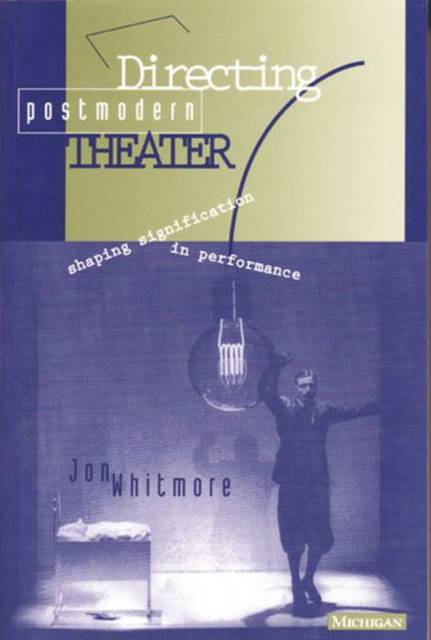
- Afhalen na 1 uur in een winkel met voorraad
- Gratis thuislevering in België vanaf € 30
- Ruim aanbod met 7 miljoen producten
- Afhalen na 1 uur in een winkel met voorraad
- Gratis thuislevering in België vanaf € 30
- Ruim aanbod met 7 miljoen producten
Zoeken
Omschrijving
Directing Postmodern Theater brings together critical theory and contemporary theater practice to provide valuable tools for directing in today's expansive performance world.Postmodern theater places new and novel demands on stage directors. It is more experimental, and the boundaries of what constitutes a performance have shifted. Dialogue is no longer always the primary mode of communication, and music, sound, movement, and other visual elements are being explored as ways to make meaning onstage.Directing Postmodern Theater identifies the key communications systems at work in the theater: linguistic, visual, aural, olfactoral, and physical. Further, it pinpoints and examines twenty semiotic sign-systems that can be manipulated by directors to bring about meaningful communication. It is also the first book to bridge the gap between theoretical discussions of semiotics and the actual practice of producing theater. For those theories to have an impact, argues Whitmore, they must be linked to the process of transforming a playscript or concept into a living performance. This book fills the gap in practical yet provocative ways, grounding theoretical discussions in examples from specific postmodern productions.
Specificaties
Betrokkenen
- Auteur(s):
- Uitgeverij:
Inhoud
- Aantal bladzijden:
- 254
- Taal:
- Engels
- Reeks:
Eigenschappen
- Productcode (EAN):
- 9780472065578
- Verschijningsdatum:
- 9/06/1994
- Uitvoering:
- Paperback
- Formaat:
- Trade paperback (VS)
- Afmetingen:
- 150 mm x 226 mm
- Gewicht:
- 362 g

Alleen bij Standaard Boekhandel
+ 88 punten op je klantenkaart van Standaard Boekhandel
Beoordelingen
We publiceren alleen reviews die voldoen aan de voorwaarden voor reviews. Bekijk onze voorwaarden voor reviews.








